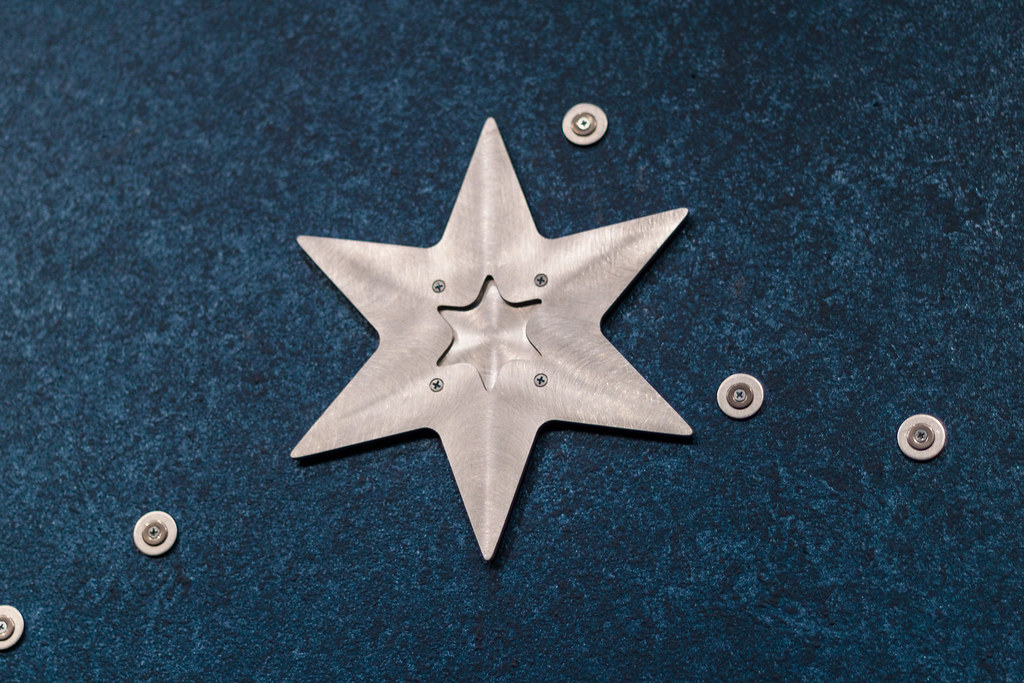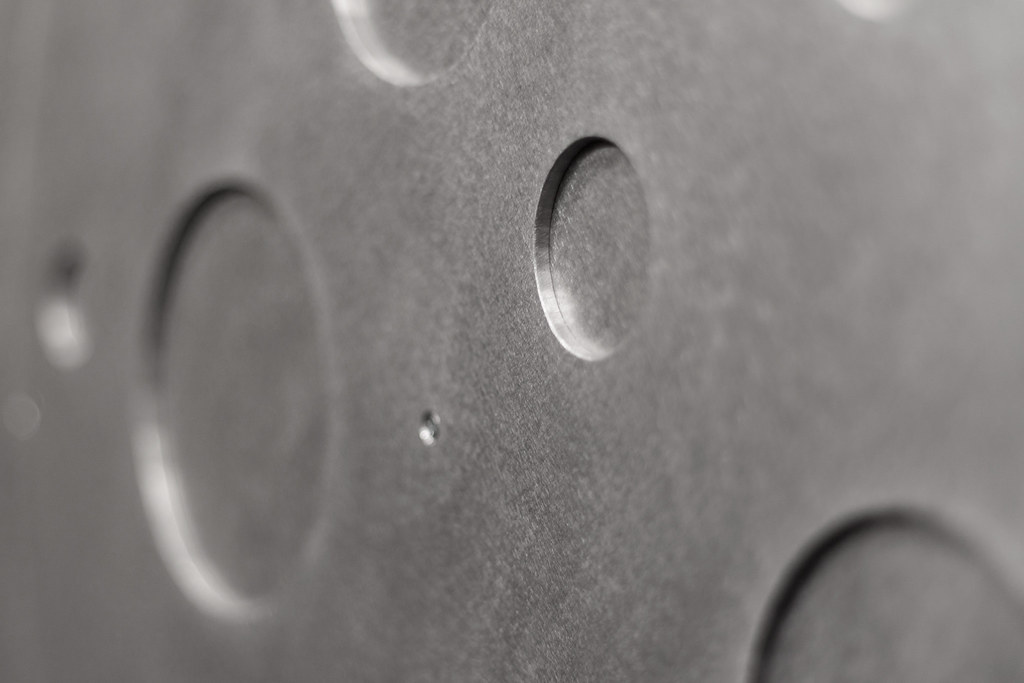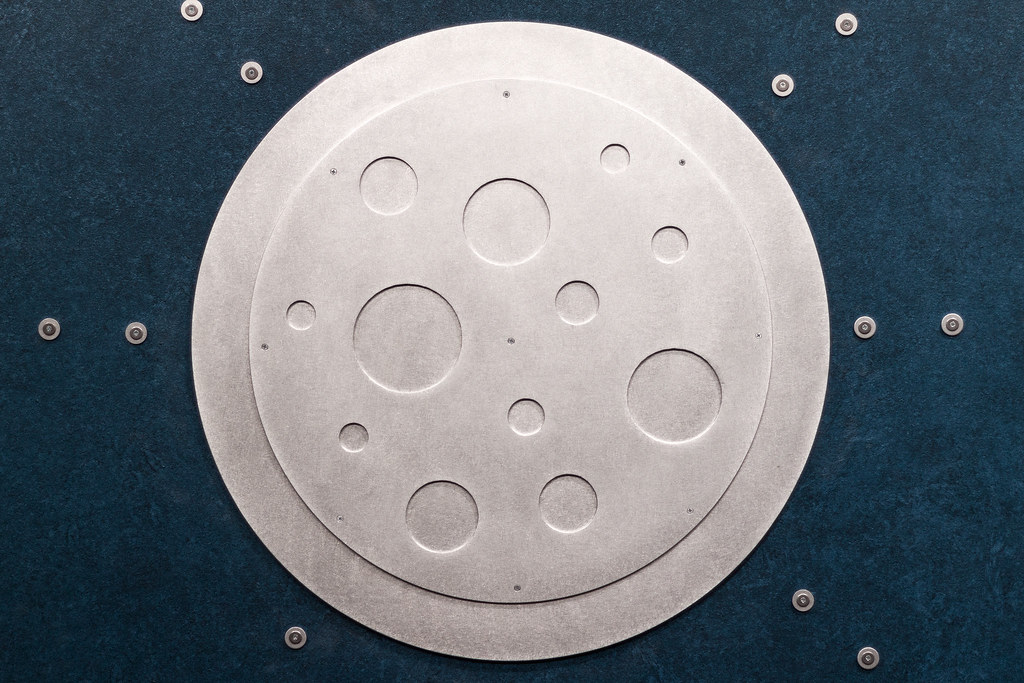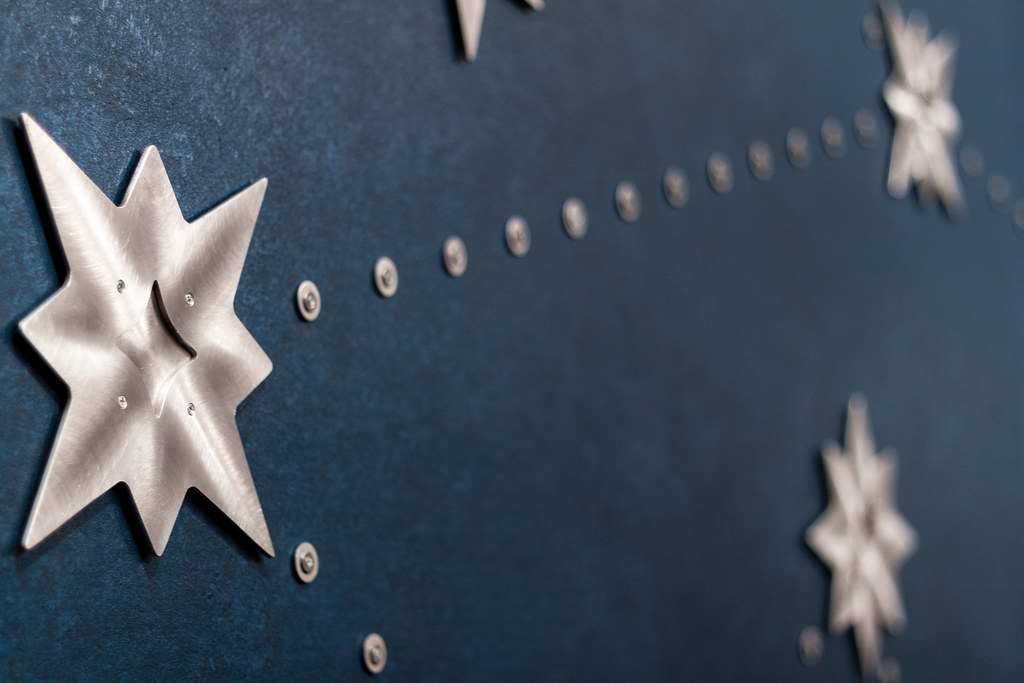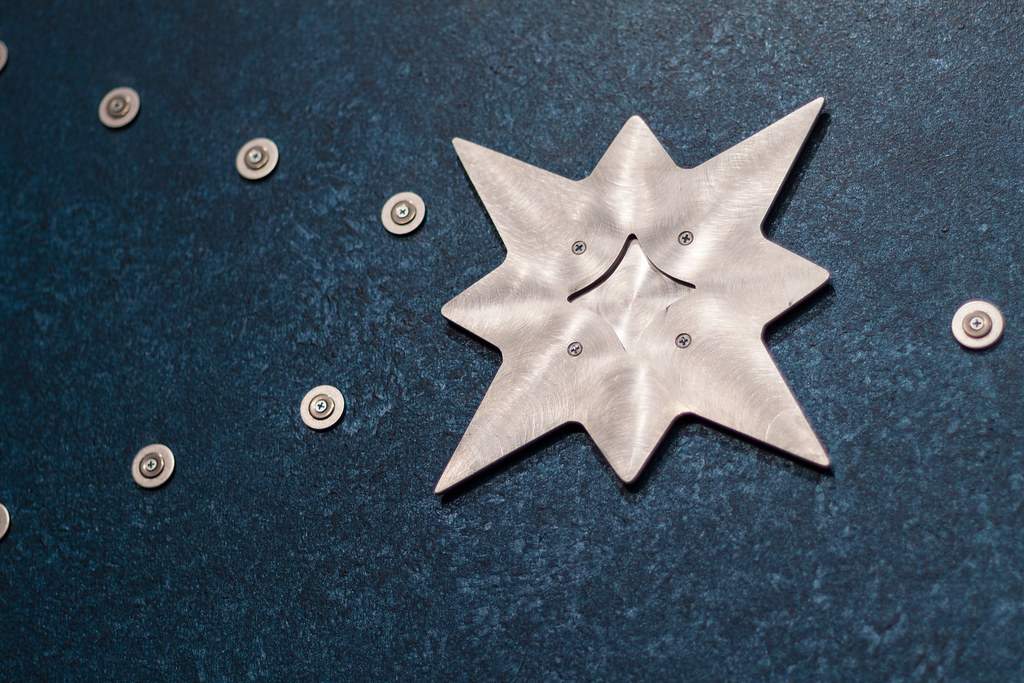Reach
Pittsburgh, Pennsylvania 2013-09-30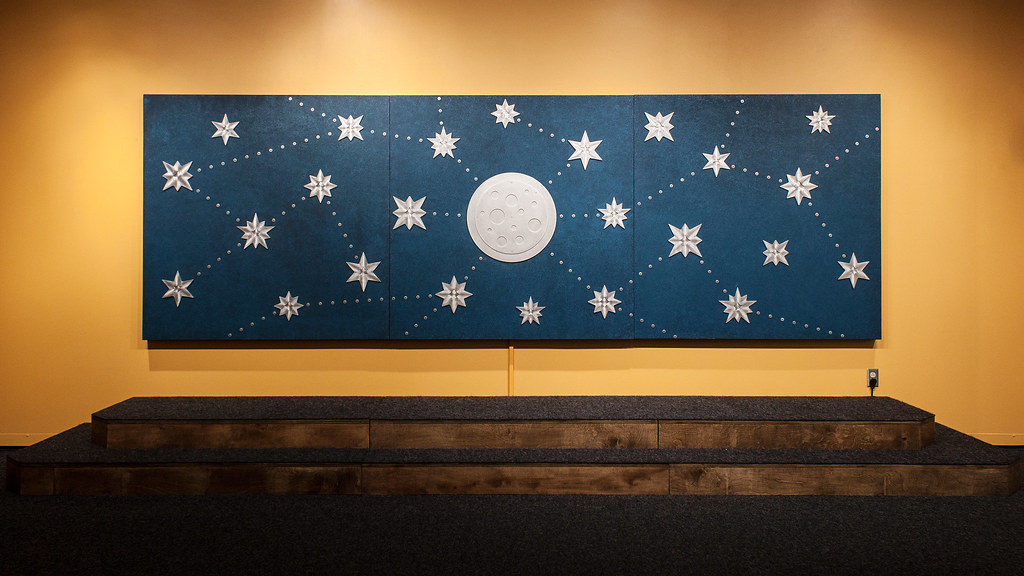
Description
Reach is a large-scale interactive mural and musical instrument created for the Children’s Museum of Pittsburgh as part of the Tough Art residency program. There are no visible electronics, but when users touch both the moon and a star (either alone or by holding hands with others) a tone is played.
Concepts
Pittsburgh is a city of bridges, so the idea of spanning or reaching across a space came directly from the skyline. I was also interested in the idea of non-competitive play, in which a child could accomplish a goal alone, or by cooperating with their family and friends. Finally, as with much of my work, a major drive in the creation of this project was the idea of “magical” interactions with technology. In other words, ways of interfacing with electronics other than the standard buttons and screens to which we’ve become overly attached.
Slideshow
Panels
Reach consists of three large (60”x60”) panels with surfaces and internal supports cut from 5/8” Baltic birch plywood. So that there would be no visible fasteners or need for puttying screw holes, I used a Kreg pocket hole jig, which greatly streamlined construction. I stained the sides of the panels a medium walnut and coated the surfaces using a “textured metallic” technique with Sherwin Williams paint. This approach involves a base coat, a metallic coat and a glaze coat of different colors. Sherwin Williams has a number of predesigned options, but I chose to experiment with my own color combinations and came up with a base coat of Down Pour, topped with a Smokey Blue metallic layer and a glaze layer of Dark Night.
Making Of
Metalwork
The moon and twenty-four stars were cut with a water jet at the Pittsburgh branch of Techshop from a sheet of 1/8” 3003 aluminum. I spent a lot of time filing them down to make them safer for little fingers and drilled holes and countersinks for mounting. I also cut a range of square spacers to raise the stars from the panels at the museum shop. It would have been faster, of course, to do all of these secondary operations on the water jet, but that machine is billed by the minute and I wanted some practice with working metal.
The stars and moon are mounted to the panels with machine screws, which also act as conductors, passing electricity to the wires in the back. To create a constellation effect, I added decorative lines of dots using stacks of washers attached to the panels with sheet metal screws.
Circuitry
The circuitry of Reach functions on the same principle as the MaKey MaKey, a device for turning everyday objects into touch-based inputs. Three Arduino Micros (one for each panel) have inputs connected to very strong resistors (22 Mohm). The resistance of the human body is much lower than that, so when a person forms an alternate route for the electrons, the inputs go low. With such high resistance values, the input tends to get a little noisy, so software filtering is in place to keep things stable. The inputs are connected to the stars with CAT-5 cable and the moon is connected to ground.
The Arduinos are connected to a BeagleBoard-xM via USB. The BeagleBoard is running a distribution of Linux from Stanford called Satellite CCRMA, which is designed specifically for building embedded musical instruments and embedded art installations. The enclosures for the Arduinos and BeagleBoard were made out of scrap acrylic and polycarbonate at the museum shop.
Electronics
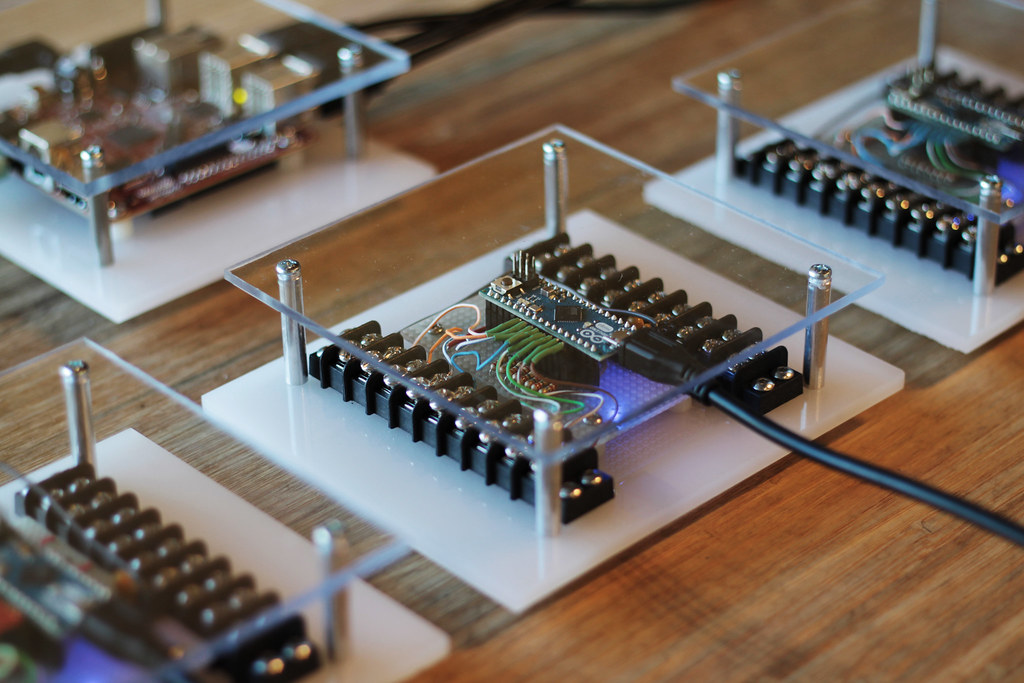
Software
The three Arduino Micros are running a sketch based on the MaKey MaKey software, but adapted to communicate via serial along with various other tweaks and optimizations. On the BeagleBoard, a Pure Data patch watches for incoming serial data and maps the input to MIDI notes, which it sends to one of four software synthesizers.
Both the Arduino sketch and PureData patch are viewable on GitHub.
Additional Components
To provide a extra height and indicate that the panels should, in fact, be approached, I built a set of three two-step stair units. The stairs were framed with 2”x6” pine lumber and faced with 3/4” plywood. I stained the risers with the same walnut stain that I used for the frames and covered the treads and top surfaces with carpet to match the space in the museum.
Mounted on pillars adjacent to the panels are two Pyle mini-monitors, which are connected to an amplifier hidden below the stairs.
Installation Test
The Residency
The Tough Art residency is a summer-long program at the Children’s Museum of Pittsburgh, during which a group of artists create new pieces to be installed on the museum floor. During the residency, the artists work with museum staff and interact with visitors to design, prototype and build their final project.
The other 2013 residents were Chris Beauregard, Katie Ford and a team consisting of Isla Hansen and Luke Loeffler.
Thanks
Many thanks to the Children’s Museum of Pittsburgh and the exhibits team there—especially Nick Hohman, Greg Russo and Greg Witt. Massive thanks to Lisa Carvajal, Exhibits Design Manager and coordinator of the Tough Art program, who was unbelievably welcoming and helpful throughout my time at the museum. Thanks, too, to Alexis Caldero at TechShop who made the water jet cuts.
The song in the making of video, Like a Lake (Instrumental), is used courtesy of Jim Guthrie. It appears on his album Takes Time: Instrumentals & Demos.
